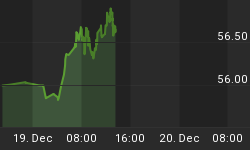Summary
A) Investors generally return to the market after Labor Day from Summer Vacation. Trading volume picks up.
B) Investors are returning to an extremely volatile market where three digit moves have become the norm.
C) Precious metals and commodities come back into favor when searching for a safe haven for capital preservation.
D) Uncertainty on U.S. rate increase decision September 17th could lead to more major moves lower.
E) After a 7 year decline, precious metals, commodities and the junior miners may be the best place to be for the following 10 reasons.
As the summer comes to an end, investors return to their offices and trading volumes tend to pick up after Labor Day. I expect that many are realizing the markets have considerably changed since May. Global equity markets are all off led by the price decline in the S&P 500 which has broken its four year uptrend forming a technically bearish death cross. The name of the game right now is capital preservation and plunge protection. Look for rallies in equities such as the Dow to be short lived.
The Fed is expected to raise interest rates for the first time in many years on September 17th. However, there is growing uncertainty that will not occur especially due to the recent equity market volatility. Many other major economies such as China are announcing stimulus plans to prevent a recession. As the global stock markets rolls over on fear of a U.S. Rate increase, it could boost the value in the beaten down precious metals and commodities as they may be seen as a safe haven to protect against a plunge and preserve capital.
Here are ten reasons why I believe gold, silver, commodities and especially junior miners may be the best place to be over the next 3-5 years. The bottoming process for the juniors after a seven year decline may be ending in the next few months as they once again come back into favor for the following ten reasons.
-
Junior Miners are now even more cheap than they were in the late nineties when gold was below $275 an ounce. This might be a once in a lifetime buying opportunity that may not last for much longer. The safest havens during periods of deleveraging are the assets already trading near liquidation levels.
-
The stock market and U.S. treasury market is extremely overvalued and has been going straight up for more than four years boosted artificially by quantitative easing and government stimulus. The odds for a bear market have been extreme for many months. Do not be surprised of a 30-50% possible decline as the momentum traders are automatically stopped out.
-
Many of the momentum and high frequency traders left precious metals and chased stocks higher over the past few years since 2011. That trend as evidenced by the Dow-Gold Ratio may be changing. As soon as that upward trend in equities was broken we saw a massive shakeout.
-
The bear market in commodities really began during the U.S. credit crisis and has lasted close to seven years. This is one of the longer declines in terms of length duration. Over the years there has been a drastic reduction in mineral exploration and development due to investors chasing the latest fads in social media and biotech. This could create a major shortage of mineral supplies going forward over the next decade.
-
Precious metals and commodities provide diversification to stocks and bonds. One must have a portfolio of hard asset investments but they must be chosen wisely. One must be a good stock picker and investigate the management team that it has the best interest of shareholders in mind.
-
Investors may be nervous of credit risk and want tangible assets in the form of precious metals and commodities. The prices of hard assets unlike so many equities can't disappear. Rising interest rates and a slowing economy could actually boost commodities as it did in the 1970's.
-
The majority of investors are usually wrong and for the first time that I can ever remember there is a net short position on gold. Just like a few months ago I said don't be surprised to see huge moves to the downside on U.S. bonds and equities, I also expect huge moves on the upside for gold. It may be extreme but I feel the headlines could change from "Record Down Day for The Dow" to "Largest Percentage Daily Increase in Gold Price" as investors once again seek out safe havens.
-
Mining stocks are trading at historically discounted valuation and generational lows. This could be one of the best contrarian opportunities of a lifetime especially for younger investors who have not yet positioned their portfolios to the sector. Look at the recent moves by Soros, Icahn and Drunkenmiller to increase exposure to commodities.
-
Quantitative easing should continue across the Globe to prevent deflation. It may not be successful. The Banks can print but they can't make more commodities out of thin air.
-
The commodities relationship to stocks and financial assets is negatively correlated meaning they can go up when other assets deflate.















